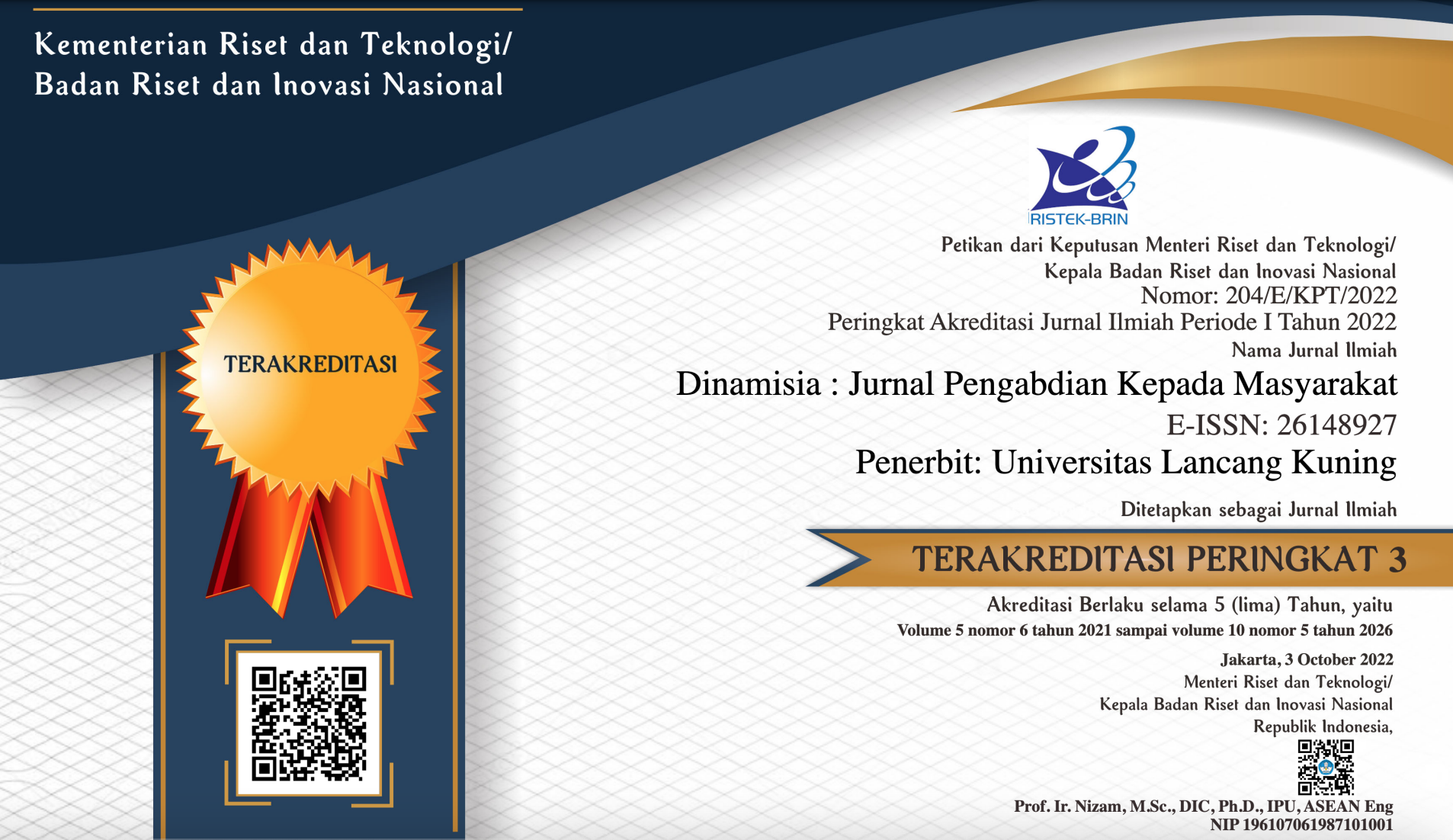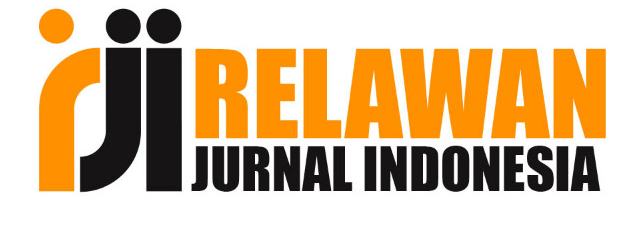Peningkatan Rasa Percaya Diri Siswa Tunagrahita Melalui Pembelajaran Terintegrasi Semiotik Dengan Media Buku Pop Up
Abstract
This service program is motivated by the lack of confidence in communicating retarded students in SLB C Autis Negeri Tuban. The lack of confidence in communication is caused by the lack of mastery and understanding of vocabulary. Therefore, by using a semiotic integrated learning design with pop-up book media it is hoped that it will increase the confidence of mentally retarded students, especially in communicating with others. This dedication program is carried out in the form of classroom action research involving 10 mild retarded students (C) and 5 moderate retarded students (C1). The team applies semiotic integrated learning with pop-up book media for six meetings. The results of this program indicate that there is an increase in confidence in mild and moderate retarded students at SLB C Autis Negeri Tuban. Confidence occurs through various processes, namely 1) self-performance, self-activity activities carried out in the learning process are the courage to appear in front of the class, tell stories, and answer questions. 2) there is a process of interaction and communication in learning activities between educators and students and fellow friends when the self-activity takes place. Thus, it can be concluded that through semiotic integrated learning with pop up book media can increase the confidence in communication retarded students.
Downloads
References
Somantri, S. (2007). Psikologi Anak Luar Biasa. Bandung: PT. Rineka Aditama
Radford, L. (2006). Algebraic Thinking and The Generalization of Patterns: A Semiotic Perspective. Alatorre, S., Cortina, J.L., Sáiz, M., and Méndez, A.(Eds) (2006). Proceedings of the 28 annual meeting of the North American Chapter of the International Group for the Psychology of Mathematics Education. Mérida, México: Universidad PedagógicaNacional. Vol. 1. 1-21
Fadiana, M., Amin, S. M., & Lukito, A. (2018). Profil Generalisasi Berdasarkan Perspektif Semiotik Siswa Operasional Konkret Dan Operasional Formal. Jurnal Ilmiah Pendidikan Matematika. Vol. 3(2). 99-106
Fadiana, M. (2016). Peran Gestur Dalam Pembelajaran Matematika. Prosiding Seminar Nasional Masif II Tahun 2016. Semarang : FMIPATI Universitas PGRI Semarang
Alibali, M. W., & Nathan, M. J. (2007). Teachers’ gestures as a means of scaffolding students’ understanding: Evidence from an early algebra lesson. In R. Goldman, R. Pea, B. Barron, & S. J. Derry (Eds.), Video research in the learning sciences,349–365, Mahwah, NJ: Erlbaum
Bieda, K. N., & Nathan, M. J. (2009). Representational disfluency in algebra: Evidence from student gestures and speech. ZDM—The International Journal on Mathematics Education. Vol. 41. 637–650
Rosalina,C.D., & Nugrahani, R. (2018). Pengembangan Media Buku Pop-Up Untuk Pembelajaran Mengenal Huruf Alphabet Anak Usia Dini. Prosiding Seminar Nasional Hasil Penelitian Dan Pengabdian Kepada Masyarakat III Universitas PGRI Ronggolawe Tuban. Tuban: LPPM Universitas PGRI Ronggolawe Tuban
Hendra, S. (2006). Kiat Membina Anak Agar Senang Berkawan. Jakarta: PT. Elex Media Komputindo.
Nuraini, P & Subiyanto. (2018). Media Pembelajaran Srapbook pada HIMPAUDI Magelang Utara. DINAMISIA-Jurnal Pengabdian Kepada Masyarakat. Vol 2 (1). 38-41
Timothy, W. (2012). 7 Cara Meningkatkan Rasa Percaya Diri Anak. Diakses dari http://www.pendidikankarakter.com/wp-content/uploads/7-CaraMeningkatkan-Rasa-Percaya-Diri-Anak.pdf pada tanggal 27 September 2019
Iskarima, R. (2009). Super Confident Child: Tips Agar Anak Pemberani dan Percaya Diri. Yogyakarta: Impremium.



















